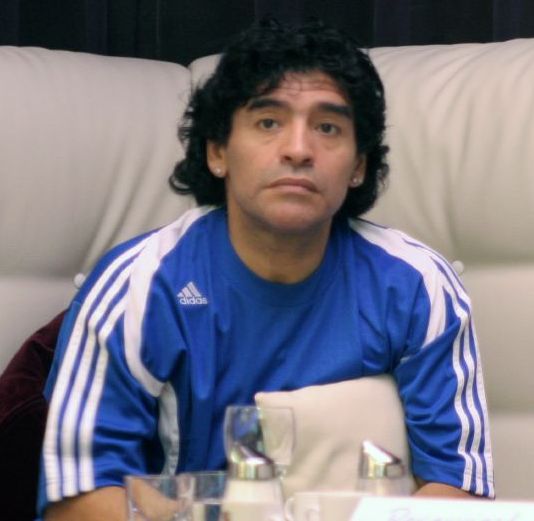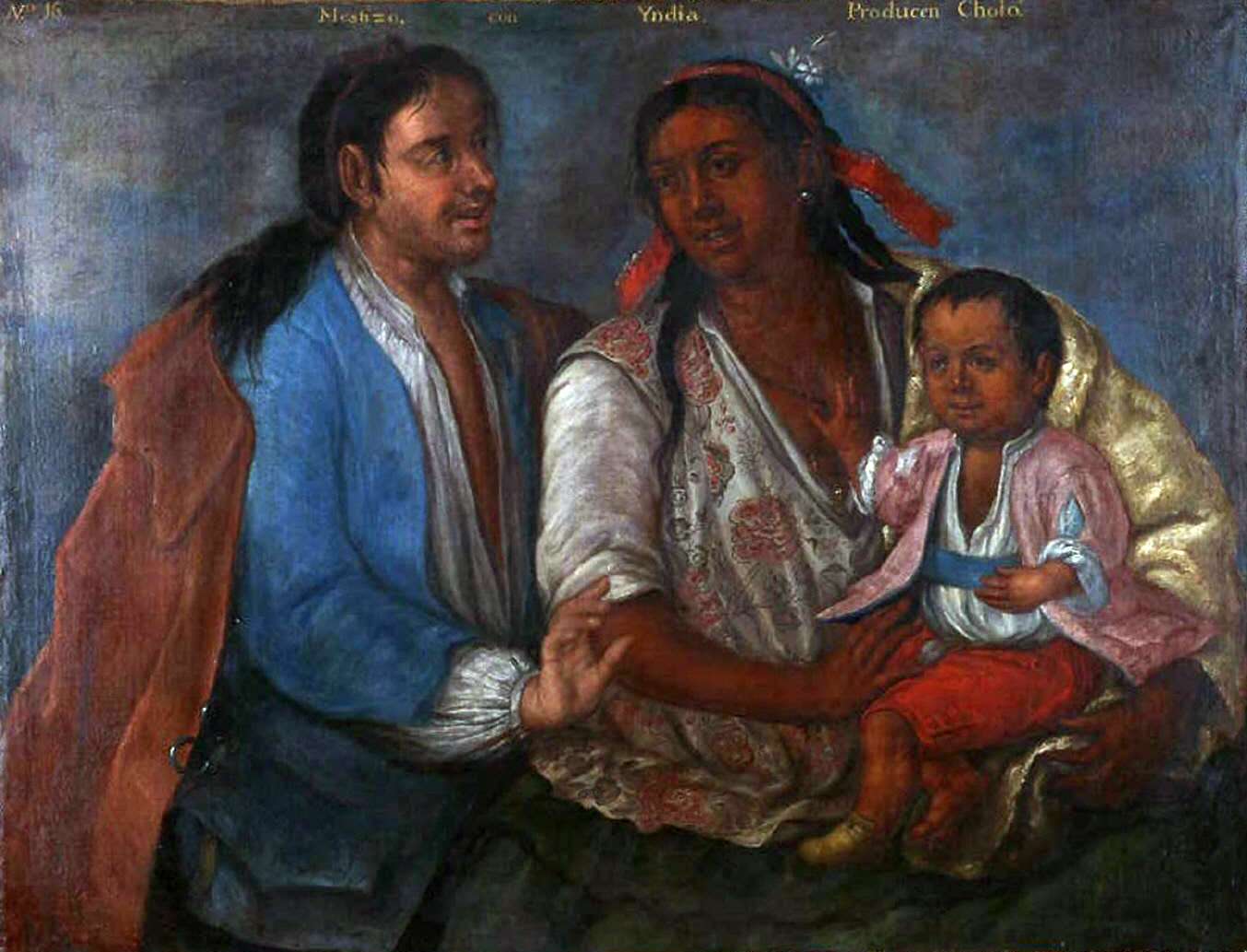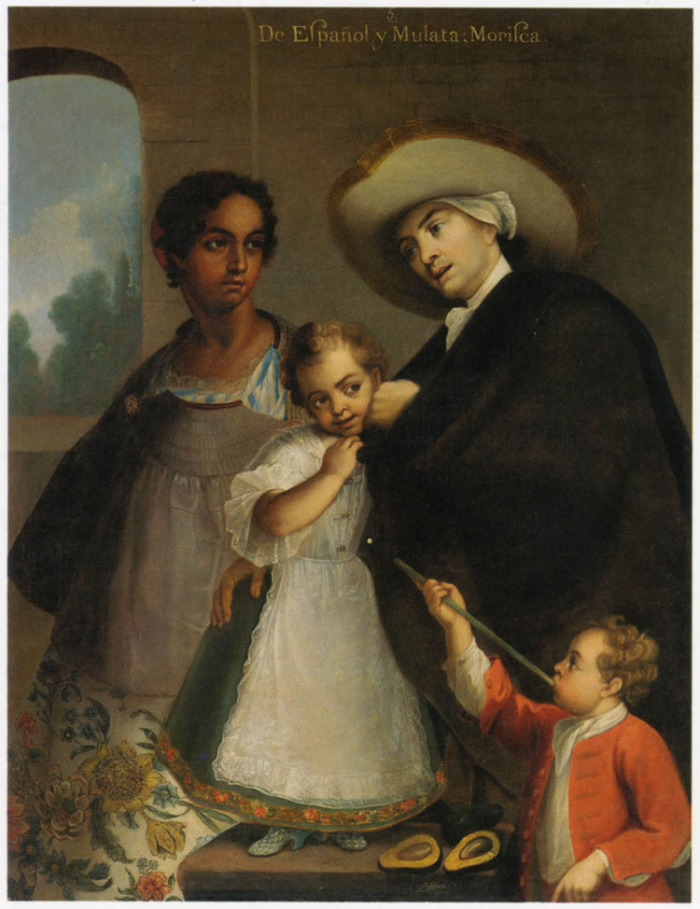|
Castizo
''Castizo''Pronunciation in Latin American Spanish: (fem. ''Castiza'') was a racial category used in 18th-century Spanish America to refer to people who were three-quarters Spanish by descent and one-quarter Amerindian. The category of ''castizo'' was widely recognized by the 18th century in colonial Mexico and was a standard category portrayed in eighteenth-century casta paintings. History In the taxonomic chart accompanying a work on casta paintings, ''castizo'' is given as "uncertain origin". It appears in 1543 with the meaning "class, condition, social position" (''calidad, clase o condición''). The term ''castizo'' applied to the offspring of a union of a Spaniard and a '' mestiza'' (offspring of a Spaniard and an indigenous woman); that is, someone who is of three-quarters Spanish and one-quarter Amerindian ancestry. During this era, various other terms (''mestizo'', ''cuarterón de indio'', etc.) were also used. Most scholars do not view the racial labels and hierar ... [...More Info...] [...Related Items...] OR: [Wikipedia] [Google] [Baidu] |
Mestizo
( , ; fem. , literally 'mixed person') is a term primarily used to denote people of mixed European and Indigenous ancestry in the former Spanish Empire. In certain regions such as Latin America, it may also refer to people who are culturally European even though their ancestors were Indigenous American or Austronesian. The term was used as an ethno-racial exonym for mixed-race that evolved during the Spanish Empire. It was a formal label for individuals in official documents, such as censuses, parish registers, Inquisition trials, and others. Priests and royal officials might have classified persons as mestizos, but individuals also used the term in self-identification. With the Bourbon reforms and the independence of the Americas, the caste system disappeared and terms like "mestizo" fell in popularity. The noun , derived from the adjective , is a term for racial mixing that did not come into usage until the 20th century; it was not a colonial-era term.Rappaport, Joa ... [...More Info...] [...Related Items...] OR: [Wikipedia] [Google] [Baidu] |
Casta Paintings
() is a term which means " lineage" in Spanish and Portuguese and has historically been used as a racial and social identifier. In the context of the Spanish Empire in the Americas, the term also refers to a theoretical framework which postulates that colonial society operated under a hierarchical race-based "caste system". From the outset, colonial Spanish America resulted in widespread intermarriage: unions of Spaniards (), indigenous people (), and Africans (). Basic mixed-race categories that appeared in official colonial documentation were , generally offspring of a Spaniard and an Indigenous person; and , offspring of a Spaniard and an African. A plethora of terms were used for people with mixed Spanish, Indigenous, and African ancestry in 18th-century casta paintings, but they are not known to have been widely used officially or unofficially in the Spanish Empire. Etymology is an Iberian word (existing in Spanish, Portuguese and other Iberian languages since the M ... [...More Info...] [...Related Items...] OR: [Wikipedia] [Google] [Baidu] |
Casta
() is a term which means "Lineage (anthropology), lineage" in Spanish and Portuguese and has historically been used as a racial and social identifier. In the context of the Spanish America, Spanish Empire in the Americas, the term also refers to a theoretical framework which postulates that colonial society operated under a hierarchical race-based "caste system". From the outset, colonial Spanish America resulted in widespread intermarriage: Miscegenation, unions of Spaniards (), Indigenous peoples of the Americas, indigenous people (), and List of ethnic groups of Africa, Africans (). Basic Multiracial people, mixed-race categories that appeared in official colonial documentation were , generally offspring of a Spaniard and an Indigenous person; and , offspring of a Spaniard and an African. A plethora of terms were used for people with mixed Spanish, Indigenous, and African ancestry in 18th-century casta paintings, but they are not known to have been widely used officially or ... [...More Info...] [...Related Items...] OR: [Wikipedia] [Google] [Baidu] |
Cholo
''Cholo'' () was a racial category used in 18th-century Spanish America to refer to people who were three-quarters Amerindians, Amerindian by descent and one-quarter Spanish people, Spanish. Its origin is a somewhat derogatory term for Multiracial people, people of mixed-blood heritage in the Spanish Empire in Latin America and its successor states as part of ''castas'', the informal ranking of society by heritage. ''Cholo'' no longer necessarily refers only to ethnic heritage, and is not always meant negatively. ''Cholo'' can signify anything from its original sense as a person with one Indigenous peoples of the Americas, Indigenous parent and one ''mestizo'' parent, "gangster" in Mexico, an insult in some South American countries (similar to Majo, chulo in Spain), or a "person who dresses in the manner of a certain subculture" in the United States as part of the Cholo (subculture), cholo subculture. Historical usage In his work ''Vocabulario en Lengua Castellana y Mexica ... [...More Info...] [...Related Items...] OR: [Wikipedia] [Google] [Baidu] |
Criollo People
In Hispanic America, criollo () is a term used originally to describe people of full Spaniards, Spanish descent born in the Viceroyalty, viceroyalties. In different Latin American countries, the word has come to have different meanings, mostly referring to the local-born majority. Historically, they have been misportrayed as a social class in the hierarchy of the Spanish colonization of the Americas, overseas colonies established by Spain beginning in the 16th century, especially in Hispanic America. They were locally born people — almost always of Spaniards, Spanish ancestry, but also sometimes of other Ethnic groups in Europe, European ethnic backgrounds. Their identity was strengthened as a result of the Bourbon reforms of 1700, which changed the Spanish Empire's policies toward its colonies and led to tensions between ''criollos'' and ''peninsulares''. The growth of local ''criollo'' political and economic strength in the separate colonies, coupled with their global geo ... [...More Info...] [...Related Items...] OR: [Wikipedia] [Google] [Baidu] |
Cholo
''Cholo'' () was a racial category used in 18th-century Spanish America to refer to people who were three-quarters Amerindians, Amerindian by descent and one-quarter Spanish people, Spanish. Its origin is a somewhat derogatory term for Multiracial people, people of mixed-blood heritage in the Spanish Empire in Latin America and its successor states as part of ''castas'', the informal ranking of society by heritage. ''Cholo'' no longer necessarily refers only to ethnic heritage, and is not always meant negatively. ''Cholo'' can signify anything from its original sense as a person with one Indigenous peoples of the Americas, Indigenous parent and one ''mestizo'' parent, "gangster" in Mexico, an insult in some South American countries (similar to Majo, chulo in Spain), or a "person who dresses in the manner of a certain subculture" in the United States as part of the Cholo (subculture), cholo subculture. Historical usage In his work ''Vocabulario en Lengua Castellana y Mexica ... [...More Info...] [...Related Items...] OR: [Wikipedia] [Google] [Baidu] |
Quadroon
In the colonial societies of the Americas and Australia, a quadroon or quarteron (in the United Kingdom, the term quarter-caste is used) was a person with one-quarter African/ Aboriginal and three-quarters European ancestry. Similar classifications were octoroon for one-eighth black (Latin root ''octo-'', means "eight") and quintroon for one-sixteenth black. Governments of the time sometimes incorporated the terms in law, defining rights and restrictions. The use of such terminology is a characteristic of hypodescent, which is the practice within a society of assigning children of mixed unions to the ethnic group which the dominant group perceives as being subordinate. The racial designations refer specifically to the number of full-blooded African ancestors or equivalent, emphasizing the quantitative least, with quadroon signifying that a person has one-quarter black ancestry. Etymology The word ''quadroon'' was borrowed from the French ''quarteron'' and the Spanish ''cuarte ... [...More Info...] [...Related Items...] OR: [Wikipedia] [Google] [Baidu] |
Coyote (racial Category)
''Coyote'' (fem. ''Coyota'') (from the Nahuatl word ''coyotl'', coyote) is a colonial Spanish American racial term for a mixed-race person casta that usually refers to a person born of parents, one of whom a Mestizo (mixed Spanish + Indigenous) and the other indigenous (''indio''). Representation The casta paintings by Miguel Cabrera José Miguel Cabrera Torres (born April 18, 1983), nicknamed Miggy, is a Venezuelan former professional baseball first baseman, third baseman, and designated hitter who played 21 seasons in Major League Baseball (MLB) for the Florida Marlins a ... (1763) show the place of the ''coyote'' in the idealized colonial racial hierarchy (''sistema de castas''). In colonial Mexico, the term varied regionally, with "regional differences determin[ing] just how much native ancestry qualified a person to be a coyote."Vinson, Ben III. ''Before Mestizaje: The Frontiers of Race and Caste in Colonial Mexico''. New York: Cambridge University Press 2018, p ... [...More Info...] [...Related Items...] OR: [Wikipedia] [Google] [Baidu] |
White Latin American
White is the lightest color and is achromatic (having no chroma). It is the color of objects such as snow, chalk, and milk, and is the opposite of black. White objects fully (or almost fully) reflect and scatter all the visible wavelengths of light. White on television and computer screens is created by a mixture of red, blue, and green light. The color white can be given with white pigments, especially titanium dioxide. In ancient Egypt and ancient Rome, priestesses wore white as a symbol of purity, and Romans wore white togas as symbols of citizenship. In the Middle Ages and Renaissance a white unicorn symbolized chastity, and a white lamb sacrifice and purity. It was the royal color of the kings of France as well as the flag of monarchist France from 1815 to 1830, and of the monarchist movement that opposed the Bolsheviks during the Russian Civil War (1917–1922). Greek temples and Roman temples were faced with white marble, and beginning in the 18th century, ... [...More Info...] [...Related Items...] OR: [Wikipedia] [Google] [Baidu] |
Caucasian Race
The Caucasian race (also Caucasoid, Europid, or Europoid) is an Historical race concepts, obsolete racial classification of humans based on a now-disproven theory of biological race. The ''Caucasian race'' was historically regarded as a biological taxon which, depending on which of the historical race classifications was being used, usually included ancient and modern populations from all or parts of Europe, Western Asia, Central Asia, South Asia, North Africa, and the Horn of Africa. Introduced in the 1780s by members of the Göttingen school of history, the term denoted one of three purported major races of humankind (those three being Caucasoid, Mongoloid, and Negroid). In biological anthropology, ''Caucasoid'' has been used as an umbrella term for Phenotype, phenotypically similar groups from these different regions, with a focus on skeletal anatomy, and especially cranial morphology, without regard to skin tone. Ancient and modern "Caucasoid" populations were thus not exclu ... [...More Info...] [...Related Items...] OR: [Wikipedia] [Google] [Baidu] |







